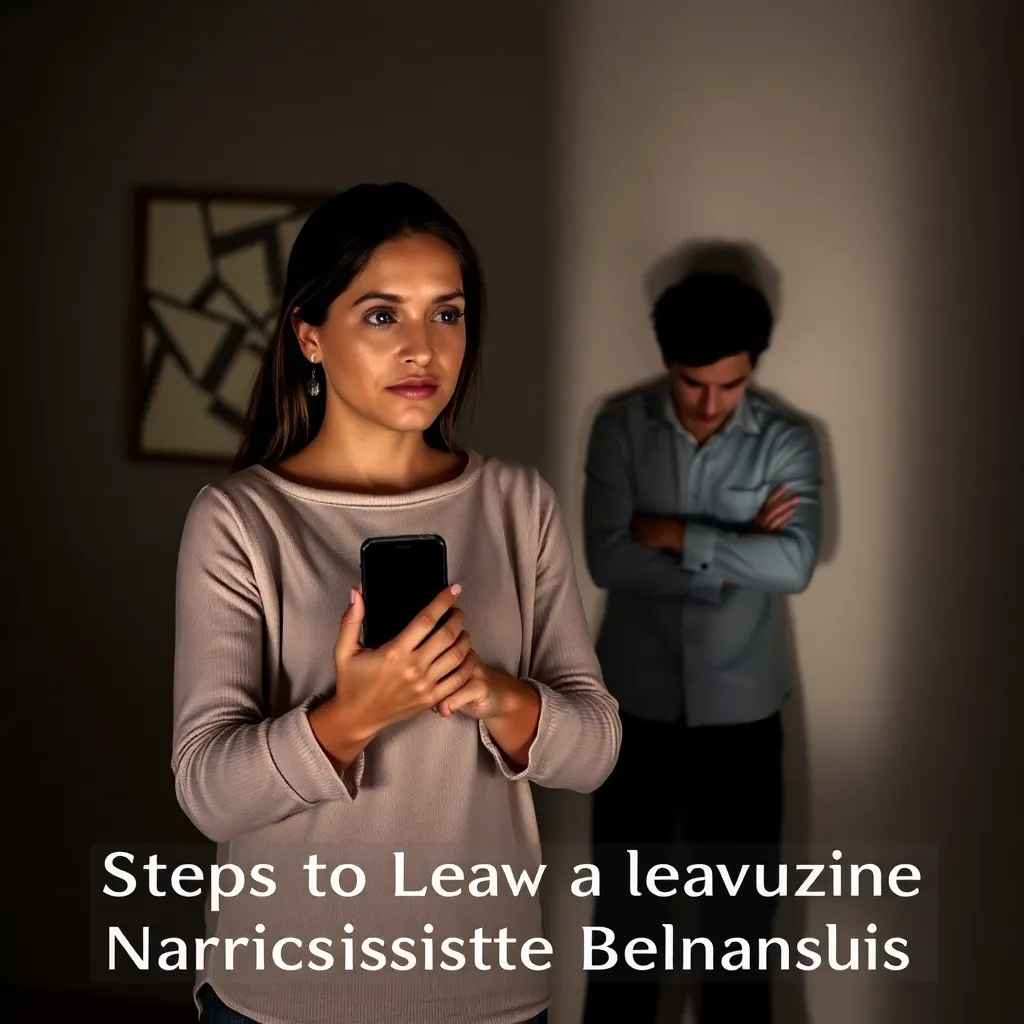Navigating the complexities of a relationship with a narcissist can feel like walking a tightrope, where your emotional balance is constantly at risk. If you’ve clicked on this article, you may be feeling overwhelmed, isolated, and perhaps even questioning your own reality. Recognizing that you deserve a healthier, more supportive partnership is a crucial first step towards reclaiming your peace of mind. Leaving a narcissistic relationship is not just about ending a partnership; it’s about embarking on a journey to rediscover your self-worth and autonomy.
This topic holds immense significance because the emotional and psychological toll of staying in such a relationship can be incredibly damaging. By addressing this issue, we aim to equip you with the knowledge and tools to make informed decisions that prioritize your well-being. In the following sections, you’ll discover practical steps that can help you plan your exit safely and effectively. From understanding the signs to creating a support system, we will guide you through each essential phase of this transformative journey.
As you read on, you’ll learn strategies to protect yourself both emotionally and legally, ensuring that your transition is as smooth as possible. We’ll delve into ways to rebuild your confidence and establish new boundaries, empowering you to create a future filled with healthier relationships. Remember, taking these steps is not just about leaving behind what no longer serves you, but about moving towards a life where your needs and happiness are valued.
1. Recognizing Narcissistic Behaviors

Recognizing narcissistic behaviors is the first crucial step in understanding the dynamics of your relationship. You might notice your partner displaying a persistent need for admiration and a lack of empathy towards your feelings.
In many cases, a narcissistic partner may frequently dismiss your achievements while always being the center of attention in conversations. This can leave you feeling invisible and unimportant, eroding your self-esteem over time.
Consider the example of someone whose partner constantly belittles their concerns, making them feel guilty for having needs. Such scenarios are emotionally draining and can significantly affect your mental health.
Experts often note that narcissists use tactics like gaslighting to make you question your reality, leaving you confused and dependent on their version of events. Understanding these behaviors can empower you to take the necessary steps towards a healthier relationship.
Identifying these patterns is empowering, as it opens the door to positive change. By recognizing these signs, you take the first step towards a more fulfilling and respectful relationship.
2. Assessing Emotional Preparedness

Once you’ve taken steps to recognize the narcissistic behaviors in your relationship, it’s crucial to assess your emotional preparedness for leaving. Many individuals find themselves overwhelmed by a mix of conflicting emotions, such as guilt, fear, or self-doubt, which can make the decision to leave even more challenging.
Consider reflecting on your own emotional state by journaling or speaking with a trusted friend or therapist. This process can help you gain clarity on your feelings and determine if you’re ready to take the necessary steps towards a healthier future.
Understanding that your emotions are valid and deserve attention is key. It’s important to remember that feeling confused or uncertain is a natural part of this journey, as many others in similar situations have experienced.
Seeking the guidance of a mental health professional can provide invaluable support. A therapist can offer insights into your emotional readiness and help you develop a personalized plan for moving forward confidently.
Ultimately, recognizing and accepting your emotions can empower you to make decisions that align with your personal growth and happiness. By taking small steps to understand your feelings, you lay the groundwork for a more fulfilling life beyond the relationship.
3. Planning Your Safe Exit

When planning your safe exit, it’s crucial to have a well-thought-out strategy to ensure your safety and well-being. You might feel overwhelmed, but breaking this process into small, manageable steps can make a significant difference.
One of the first steps is to gather and organize important documents such as identification, financial records, and any legal paperwork. Having these items readily accessible can prevent unnecessary stress and complications during your departure.
Consider confiding in a trusted friend or family member who can provide support and possibly assist you during your transition. They can help you stay grounded and offer a fresh perspective when emotional turmoil clouds your judgment.
It’s essential to establish a financial safety net by setting aside funds that can support you temporarily. Opening a separate bank account, if possible, can help you secure your finances without raising suspicion.
Finally, reach out to local support services or domestic violence hotlines that can offer guidance and resources tailored to your situation. These professionals can provide expert insights into crafting a safe and effective exit strategy.
Taking these deliberate steps not only ensures your safety but also reinforces your emotional readiness to move forward. Remember, the goal is to prioritize your well-being and build a foundation for a healthier future.
4. Building a Support Network

Leaving a narcissistic relationship can be incredibly isolating, making it crucial to build a support network that empowers and uplifts you. Friends and family who understand the nuances of such relationships can offer unwavering emotional support and practical assistance during this transition.
Imagine reaching out to a trusted friend who has witnessed your struggles; their perspective can be both validating and eye-opening. They might remind you of your strengths and help you see the light at the end of the tunnel, reinforcing your resolve to move forward.
Professional support is equally important; consider connecting with a therapist who specializes in narcissistic abuse recovery. Their expert insights can help you process your experiences and develop coping strategies for the challenges ahead.
Online support groups can also be a valuable resource, offering a safe space to share your story with others who truly understand your situation. Through shared experiences, you can find both comfort and strength in the collective wisdom of those who have walked a similar path.
Ultimately, a robust support network serves as a lifeline, helping you to not only leave the toxic relationship but also to begin healing and rebuilding your life. Embrace the connections that foster your growth, and remember that you are never alone on this journey.
5. Healing After the Breakup

Once you’ve started building a support network, it’s time to focus on healing after the breakup. This phase is crucial for rediscovering your sense of self and regaining your emotional strength. Remember Maria, who found herself again by exploring her hobbies and passions after leaving a narcissistic partner. She joined a local art class, which not only helped her heal but also introduced her to a community of supportive individuals.
Healing is a journey, and it’s important to be patient with yourself as you navigate this new chapter. Allow yourself to experience the full range of emotions, from relief to sadness, without judgment. Dr. Emily Hart, a renowned psychologist, emphasizes the importance of self-compassion during this time. She suggests practicing daily affirmations to help rebuild self-esteem and confidence.
Engaging in activities that bring you joy can be a powerful tool in your healing process. Try to incorporate small, pleasurable activities into your daily routine, like taking a walk in nature or reading a favorite book. Surrounding yourself with positivity can gradually shift your mindset from one of survival to one of thriving.
